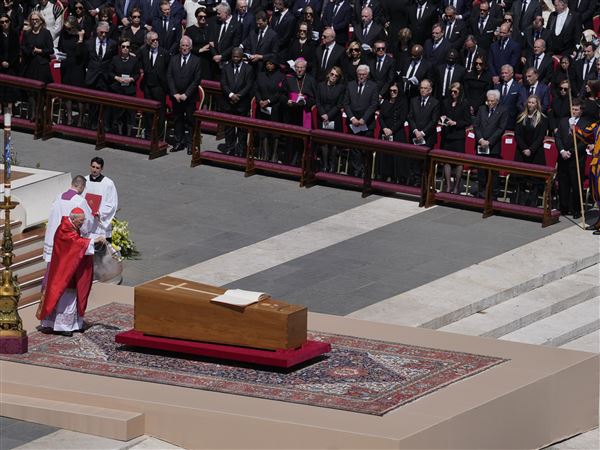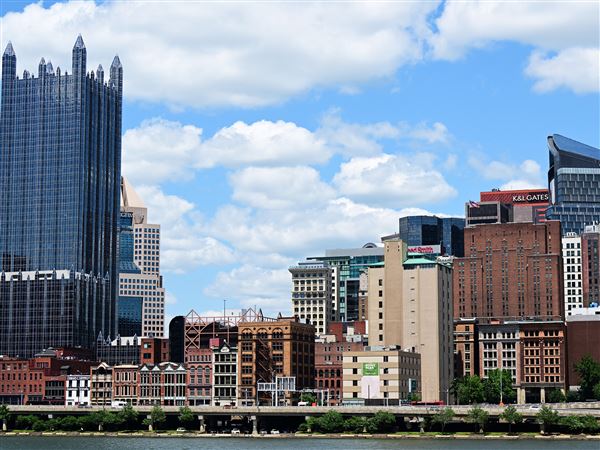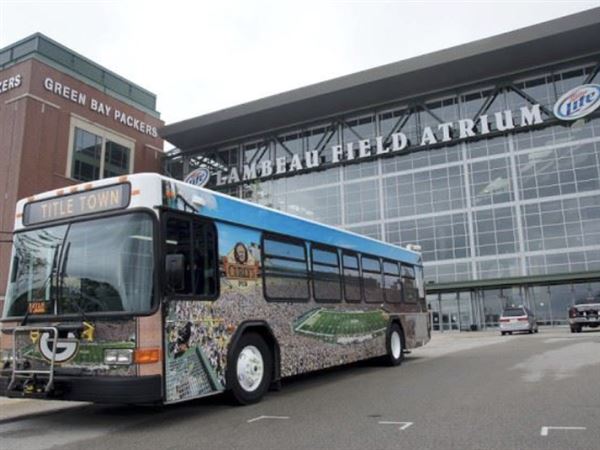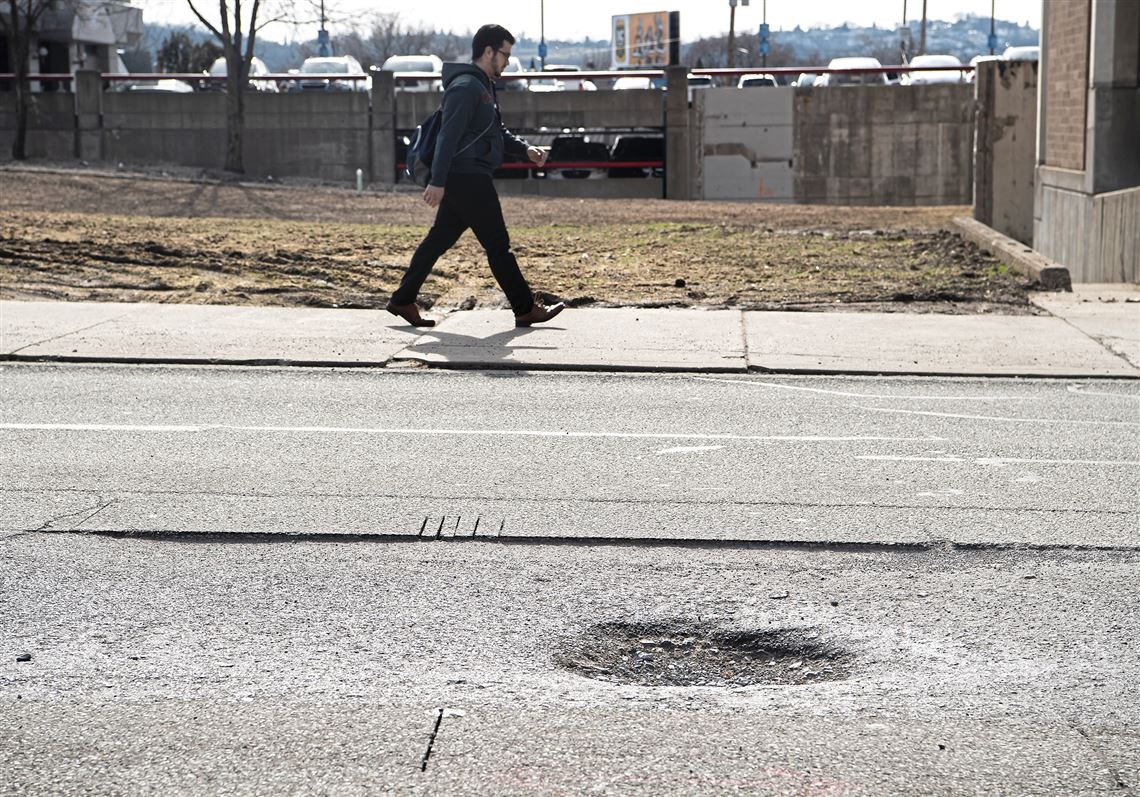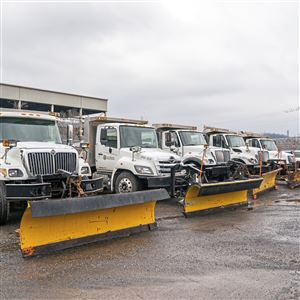Khallid Young was driving near his house in 2022 when he felt his car plunge.
“I knew it was a pothole,” Mr. Young, 28, recalled. “I stopped, then I got out and knew my tire was blown. My tire was messed up.”
The next day, he went to a nearby body shop, which assessed $600 in damages. According to AAA, the average cost to repair a car after hitting a pothole is $406.
He memorialized the experience in a Facebook post, which remains amusingly true to the 28-year-old: “A Pothole in Pittsburgh Will Change Your Radio Station And Unlock Your Car Doors.”
“I might be a comedian,” he said in a recent phone interview. “Seeing a pothole is like seeing a speed bump — you better drive slow and careful.”
More people may soon have to follow his advice, especially if the city of Pittsburgh follows through with its proposed 2025 street resurfacing budget. The budget supports Pittsburgh's nearly 1,060 miles of streets and asphalt repaving, street maintenance and pothole-patching, and the city currently projects slashing its spending on street resurfacing from $17 million to $5.5 million.
The resurfacing budget is the major source of funds for street maintenance — and a nearly $11.5 million cut is cause for concern among some local leaders.
City Councilwoman Theresa Kail-Smith represents District 2, which has more street miles than anywhere else in the city.
The 2025 budget “is minimal for the upcoming years, but the administration is looking to increase it,” she said.
Mayor Ed Gainey’s administration held a virtual presentation on the city’s 2025 capital budget on June 22, but the resurfacing budget was not discussed.
Griffith Bogan, who does damage estimates at City Collision in the Strip District, said five to 10 people bring in pothole-damaged cars per week. Blown out tires and bent steering wheels are the most common damage from potholes, Mr. Bogan said.
“A blown out tire just varies from $100 for the very cheapest end of tires, up to probably $400 or $500 on some sports cars. ... A [steering] wheel can again range from a few hundred up to a couple thousand.” Labor adds another $500 to $2,000, he said.
Potholes are formed from repeated freeze-thaw cycles in which water seeps beneath the asphalt, freezes and expands. As the cycle is repeated over and over, the asphalt cracks. Vehicles that drive over the crack damage the roadway even more, resulting in a hole in the road.
Local municipalities try everything to address potholes, which are all-too-common in Western Pennsylvania.
Pittsburgh-founded tech company Michelin Mobility Intelligence (MMI) helps local municipalities detect and analyze potholes. Public engineers use the company’s smartphone app to scan roads, which are put into a computer program and analyzed by AI. Data is then compiled and roads are evaluated, Michelin Mobility Intelligence President and COO Erik Dietz said in an email. Suburban areas currently using MMI include Shaler, Cranberry, North Huntingdon, Peters and Bethel Park.
The city relies on 311 complaints as well.
Repairs can be both nontraditional, innovative and even festive.
“I saw a pothole so big one day and I saw someone put a Christmas tree in it,” Mr. Young said. Drivers didn’t mind; they drove around it, he said.
“At least he fixed it.”
Federal initiatives also attempt to address local potholes — though most funding goes to “aging infrastructure of interstate highways and bridges,” rather than municipalities, according to PennDOT.
In four regional PennDOT projects, officials are now using modified asphalts to patch potholes. One project was completed in April, and three are expected to finish in July.
Targeted overlay pavement solutions (TOPS) are also gaining traction. TOPS uses multiple combinations of road materials and overlays to “improve performance, lessen traffic impacts, and reduce the cost of pavement ownership,” according to the center for accelerating innovation.
PennDOT recently received $700,000 for projects from an $8.8 million federal grant announced by the Biden Administration’s Investing in America agenda.
Without federal funding, the cost lands mostly on local governments — and the Gainey administration's budget predicts lean years ahead before spending on street repair rises again. From $6 million in 2026 to $16.3 million the following year, $19.3 million in 2028, and $20.6 million in 2029.
The city’s Department of Public Works and Department of Mobility & Infrastructure did not respond to multiple requests for comment.
Meanwhile, Mr. Young says potholes are an important and even identifying aspect of Pittsburgh’s culture.
“You learn to respect the potholes,” he said. “Or they’ll disrespect you in the worst way.”
Redmond Bernhold: rbernhold@post-gazette.com
First Published: July 6, 2024, 9:30 a.m.
Updated: July 6, 2024, 9:54 p.m.

